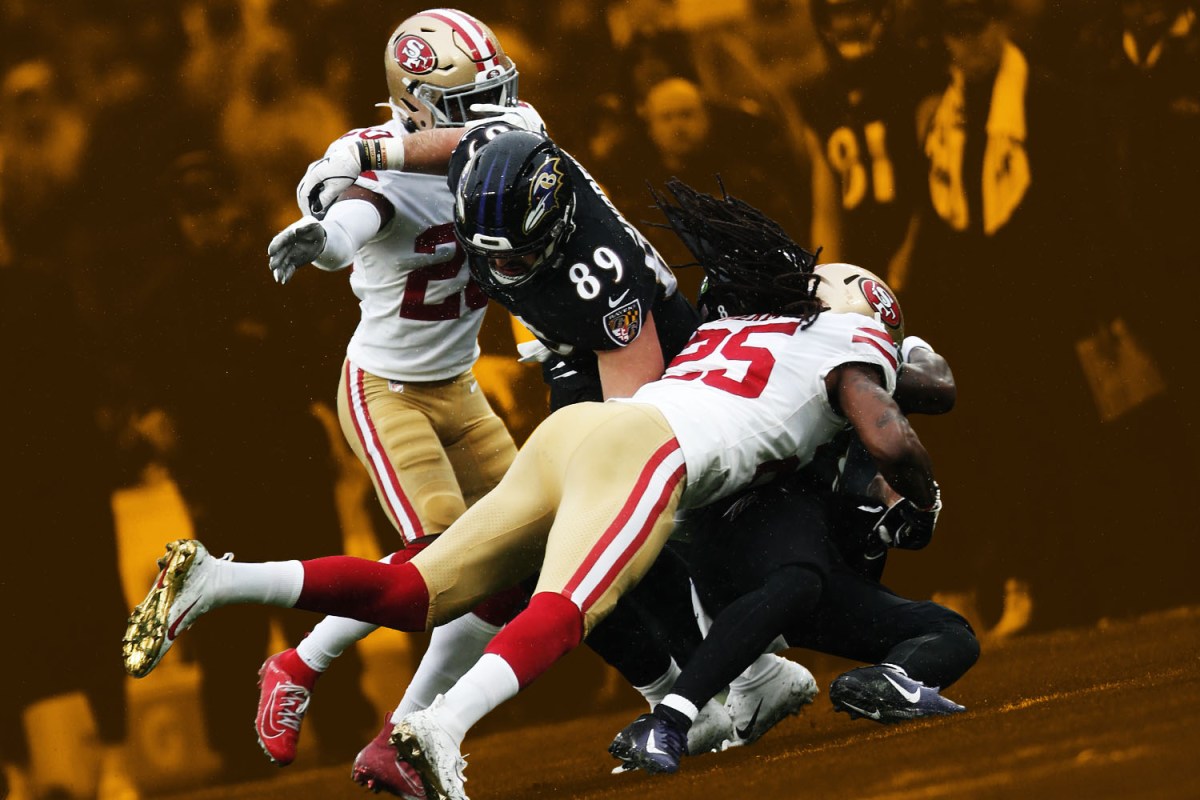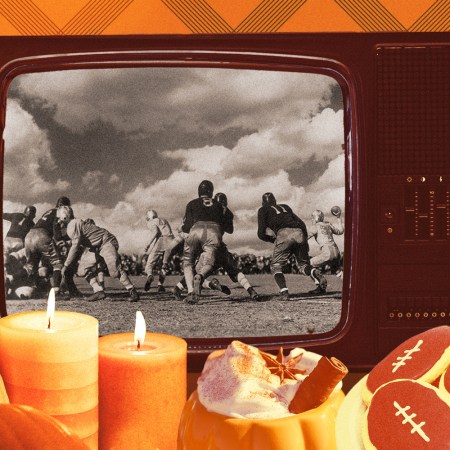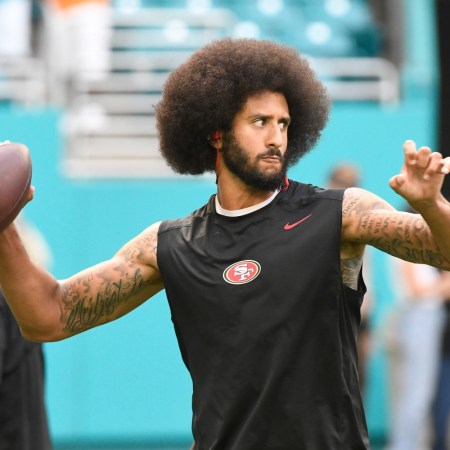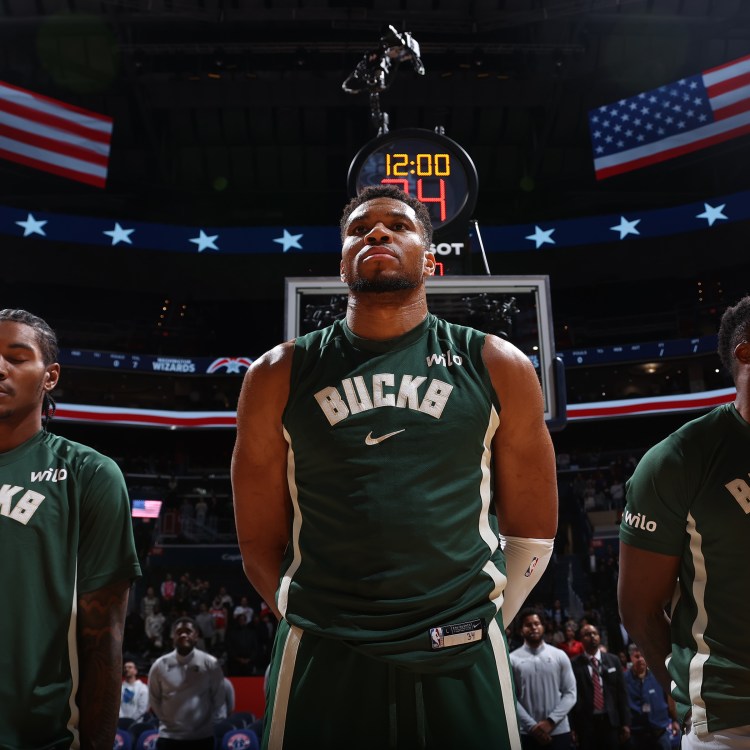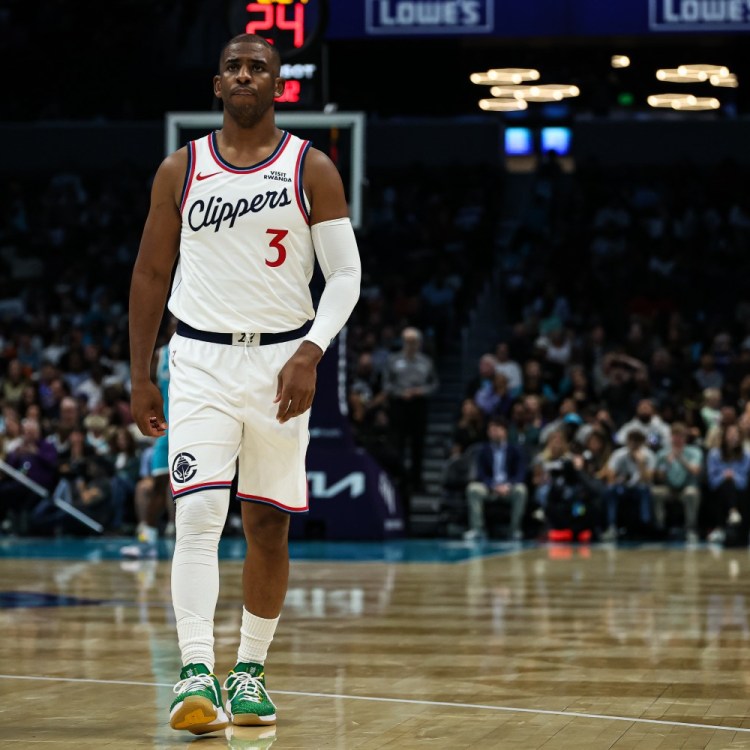Modern sports are a literal space race. Leading European soccer clubs have embraced full-throttle pressing — gegenpress — in order to shrink the available space and pin their opponent against their own goal; baseball teams exploit the field’s strange geometry through defensive shifts and homer-causing launch angles. Across leagues and continents, the last decade in sports has been defined by a widespread reevaluation of how to understand and inhabit the fields on which games are played.
In this vein, the prevailing wisdom in the NFL has shifted toward complex, high-risk offenses that borrow concepts from the spread offenses that populate college football (particularly the Air Raid philosophy of Mike Leach, the NCAA’s zaniest philosopher king). As such, passing stats have ballooned, with teams realizing the galaxies of possibility that lie three yards beyond the line of scrimmage and a cloud of dust. Defenses have responded by becoming smaller and faster, focusing more on how to quickly erase and swarm open space than how to occupy it. In 2018, defenses lined up in nickel packages — playing with five defensive backs — on about 60 percent of snaps, compared to only around 40 percent of the time in 2011. If the NFL was once ruled by workhorse running backs and stout linebackers (think: Emmitt Smith and Brian Urlacher), it’s now led by hybrid offensive threats like Christian McCaffrey and equally flexible defensive counterparts.
This year, though, the Baltimore Ravens and San Francisco 49ers are proof that the counter-revolution will be televised — or at least pirated from a Reddit stream. The two best teams in football, the Ravens and 49ers share a common ethos: pain. They are massive and mean. They are bullies.
The Ravens, led by the presumed MVP Lamar Jackson, rushed for an NFL record 3,296 yards. Jackson, the answer to the age-old question of What if Tom Brady were also a pronghorn antelope?, became the first player ever to lead the league in passing touchdowns while also rushing for over 1,000 yards in the same season. Besides the fact that Jackson is world-historically great at everything, Baltimore boasts an elite offensive line, a cadre of tight ends who can fill any role and yet another 1,000-yard rusher in running back Mark Ingram. Here is a team that is at once distinctly modern (loads of run-pass options and pre-snap motion), but undeniably throwback in its devotion to inflicting punishment.
Whereas the Ravens’ rushing attack is unlocked by their quarterback’s colossal talent, the 49ers are fueled by their head coach, Kyle Shanahan, who has quietly established himself as the league’s preeminent offensive mind. With 144.1 rushing yards per game, the 49ers trail only the Ravens. To be sure, this is a talented offense — their running back committee is deep and explosive, their wide receivers are slippery and dependable, their quarterback is a hunk — but it’s largely fueled by George Kittle, their superstar tight end. A bruising blocker, Kittle has developed into the most dynamic pass-catcher at his position since he decided to stop getting tackled; over the last two seasons, Kittle is second in yards amongst tight ends and first in yards-after-the-catch. Most of all, he enables the 49ers to outmuscle defenses in every aspect of the game.
By bucking conventional wisdom, the Ravens and 49ers have reimagined football, fusing modern offensive principles and old-school brawn. The NFL, by and large, is a combination of rare torches of inspiration and wide-spread myopia. After the Kansas City Chiefs and Philadelphia Eagles demonstrated the potency of spread offenses, the whole league rushed to copy it — save for Jon Gruden, whose entire playbook is Spider 2 Y Banana and sketches of cool visors. What makes the Ravens and 49ers so visionary is their ability to initiate trends rather than ape them — they noticed that modern defenses may be fast and versatile, but also relatively runty and vulnerable. The NFL has become a league of Yoshis; the Ravens and 49ers are unstoppable because they chose to be Bowser instead.
The lessons of the Ravens and 49ers aren’t applicable only to the NFL; they are harbingers for the next era of basketball. Like their gridiron contemporaries, NBA teams have spent the last decade delousing their roster of glacial strongmen in favor of smaller, more mobile options. Three-point shooting is at a record high, while post play — like romance, Applebee’s and the name Gary — has become yet another thing killed by millenials. Statistically, post-ups are clearly inefficient, even when (especially when) they’re run through 7’3 titans who should seemingly score at will from the block. And teams have taken notice: since the 2013-2014 season (hardly the days of Shaq and Hakeem to begin with), post-ups have declined by over 45 percent while players flocked behind the arc. Seemingly, the post-up has gone extinct — and with good reason.
Yet, post play is the future.
At its most elemental, basketball is Whack-a-Mole — a race between the offense and defense to manufacture small advantages before the other side can adjust. Roy Hibbert, for instance, became a dominant defensive anchor in the early 2010s by being super tall, holding his hands over his head, and daring players to finish over him before he was promptly rendered obsolete when the proliferation of stretch bigs exposed his fatal slowness. In turn, a premium is now placed on quick, spindly big men who can navigate areas of the court beyond the paint and corral guards coming off ball-screens. To wit, defenders frequently switch assignments on screens to muck up offensive rhythm, even if it means conceding size mismatches.
What’s more, big playmakers have taken over. LeBron James may have created this style, but the full impact is most apparent in the new generation: Luka Doncic, Ben Simmons, Giannis Antetokounmpo, Pascal Siakam and Zion Williamson are all direct stylistic descendants of LeBron. In addition, more traditional centers like Nikola Jokic and Bam Adebayo supplement their usual big-man duties with a point guard’s knack for playmaking. The NBA has never seen this many players who are so big, yet so skilled and creative with the ball.
Just as the Ravens and 49ers took over the NFL by adapting smashmouth football to the spread-offense era, these plus-sized playmakers are poised to update post play. Surrounded by Milwaukee’s shooters, Antetokounmpo is already among the inner sanctum of the most forceful and prolific interior scorers ever. He’s Shaq on Tik Tok instead of VCR. If Lamar Jackson gallops down the field, splitting open a defense that’s been stretched thin to counter spread-attacks, Giannis Antetokounmpo feasts at the rim, dunking defenders through the earth’s mantle against teams too nervous to abandon marksmen like George Hill or Khris Middleton.
Doncic is already the league’s fifth most efficient post-up player, generating 1.18 points per possession from the post. Siakam’s herky-jerky post game has helped transform him into Toronto’s post-Kawhi Leonard star; Ben Simmons has a 5:1 assist-to-turnover ratio when dishing from the post. To wit, stockier guards are also finding success in the post, with all-stars like Jimmy Butler and rookies like R.J. Barrett thriving in equal measure.
Certainly, Joel Embiid and LeMarcus Aldridge — and DeAndre Ayton, if we’re being super generous — proudly continue the lineage of post-centric stars, but the future of post play has evolved. No longer are post-ups Godzilla vs. Mothra showdowns where two large men assert their manliness one baby hook at a time. Instead, post-ups in 2020 reveal the fault lines of defenses that are forced to choose whether to prevent threes and leave one overmatched defender marooned against LeBron James or provide help at the rim and risk giving up open threes.
The Ravens and 49ers are the two best teams in football because they’re the first to see that football’s future can be created by looking at its past; they surveyed the way that teams valued space and speed and then decided to drive a snowplow straight through the middle of the field. Going forward, the NBA — with its immaculate floor-spacing and new generation of positionless, court-inverting stars — is poised for the same course correction; Goliath will eventually stomp on David.
Today, three-point shooting is basketball’s most widely valued skill, but the next big market inefficiency will be finding players who can fully capitalize on the space all this shooting affords. The traditional big man may be gone, but the post-up will eternally recur.
The Charge will help you move better, think clearer and stay in the game longer. Subscribe to our wellness newsletter today.
